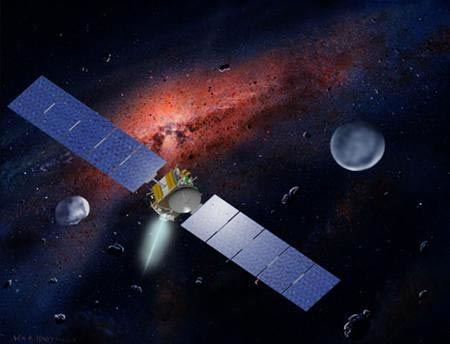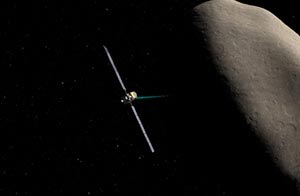NASA is about to launch the Dawn probe
On September 23, the US Air and Space Administration (NASA) announced that the Dawn probe would be launched on Thursday, September 27, to carry out an eight-year mission to find understand the cause of forming the solar system (solar system) as well as the mysteries of this system.
After delays in the last few months, NASA is now ready for the Dawn spacecraft to Ceres and Vesta, the two largest asteroids with orbit around the Sun and in the asteroid belt in the midst of stars. Fire and Jupiter.
This 1.64 m long and 1.27 m wide probe is expected to provide a deeper understanding of the blocks of rock that make up planets around the Earth and the different evolution of Mars and Jupiter.
According to NASA's plan, Dawn will take off between 11:20 GMT and 11:49 GMT, or 7:20 to 7:49 local time in Cape Canaveral, Florida .

NASA decided to launch the probe Dawn on September 27, 2007.(Photo: Reuters)
The first of Dawn's three main tasks is to learn about the first moments in the birth of the solar system 4.6 billion years ago, by collecting information about Ceres and Vesta. Next, Dawn will discover elements that make up planets like Earth, Mars, Mercury, Venus and Ceres. And Dawn's third task will be to explain why Vesta and Ceres have different structures and different evolutionary ways, especially the role of water in the development of these two celestial bodies.
Ceres, discovered in 1801, is spherical and has a diameter of about 960 km. Scientists believe it has a thick layer of ice at the bottom of the surface and this ice covers the core made of stone. Ceres was classified as a ' dwarf planet ' in 2006, according to a new astronomical definition for asteroids in the solar system.

Photo simulating the scene of Dawn approaching Ceres ' dwarf planet '. (Photo: NASA, JPL)
Meanwhile, Vesta, discovered in 1807, although smaller than Ceres, is the third largest asteroid in the solar system. With a diameter of about 520 km, Vesta has a stone surface, with no signs of water, while the lower part of the surface is hot.
Scientists are interested in a large hole in Vesta's South Pole where they believe is created from a large collision. According to astronomers, out of the total number of meteorites found on Earth, about 5% comes from the aforementioned collision.
As scheduled, Dawn will enter orbit around Vesta in October 2011, direct Ceres in May 2012 and fly around this ' dwarf planet ' in February 2015. In total, Dawn will make a journey of up to 5.1 billion km.
This probe is equipped with improved ion propulsion engines, consumes relatively little energy and only speeds up gradually during flight. Dawn also has a high-resolution camera, 2 spectrophotometers and other modern equipment.
In 2006 NASA restored the Dawn project with an investment of $ 449 million, after canceling the project earlier.
This is the ninth project of NASA's 10 Discovery projects. This program uses unmanned spacecraft to explore space, with a focus on asteroids.

(Photo: Space.com)
Quang Thinh
- Dawn's new mission mission
- NASA launches a spacecraft to explore the sun's mystery in 2018
- NASA will launch more probes on Mars
- NASA is about to launch a ship to study the Martian atmosphere
- Nasa announced its willingness to launch a spacecraft to reach the Sun on Saturday
- NASA delayed the launch of the Moon probe
- NASA spacecraft runs out of fuel after a 7 billion km journey
- NASA studies spacecraft with an asteroid explorer
- NASA launched two satellites to probe the radiation belt
- NASA is about to launch Phoenix robots to probe Mars
- The NASA spacecraft first explored asteroids
- Revealing mysteries about the Solar System
 Van Allen's belt and evidence that the Apollo 11 mission to the Moon was myth
Van Allen's belt and evidence that the Apollo 11 mission to the Moon was myth The levels of civilization in the universe (Kardashev scale)
The levels of civilization in the universe (Kardashev scale) Today Mars, the sun and the Earth are aligned
Today Mars, the sun and the Earth are aligned The Amazon owner announced a secret plan to build a space base for thousands of people
The Amazon owner announced a secret plan to build a space base for thousands of people